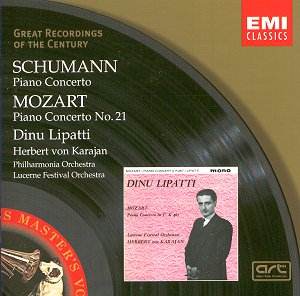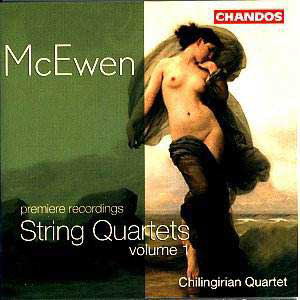 Composer: Robert Schumann
Composer: Robert Schumann
Works: Piano Concerto; Wolfgang Amadeus Mozart: Piano Concerto No. 21 in C major, K467
Performers: Dinu Lipatti (piano); Philharmonia Orchestra; Lucerne Festival Orchestra
Recording: Recorded 9-10 April 1948, No. 1 Studio, Abbey Road, London (Schumann); 23 August 1950, Kunsthaus, Lucerne (Mozart)
Label: EMI
Dinu Lipatti’s rendition of Schumann’s Piano Concerto is a significant addition to the canon of historical recordings, particularly as it emerges from the EMI ‘Great Recordings of the Century’ series. Schumann, a crucial figure in the Romantic era, encapsulates a dialogue between the classical and the emotive, and Lipatti’s interpretation navigates this duality with a remarkable sensitivity that is as compelling today as it was at its inception. Lipatti’s artistry is imbued with the tragic awareness of his own impending mortality, enriching the performance with an emotional depth that is palpable throughout the work.
The Schumann Concerto, often noted for its lyrical beauty and structural complexities, benefits from the nuanced interplay Lipatti establishes with the Philharmonia Orchestra under Herbert von Karajan. The recording captures the essence of this collaboration, with Lipatti’s lyrical phrases juxtaposed against the orchestra’s vibrant orchestration. The first movement, marked by its dramatic opening and flowing melodies, is characterized by Lipatti’s gentle articulations and a poetic sense of timing. His choice to embrace a somewhat restrained romanticism, rather than a bombastic display, aligns with Schumann’s own sensibilities and allows the music’s inherent drama to unfold organically.
In contrast, the recording of Mozart’s Piano Concerto No. 21, captured live at the Lucerne Festival, offers a different kind of intensity. Lipatti’s decision to perform his own cadenzas adds an inventive layer to the familiar work. These cadenzas, while not widely published, showcase Lipatti’s keen interpretative skills and creativity, imbuing the performance with freshness. The Lucerne Festival Orchestra, while perhaps not as illustrious as the Philharmonia, provides a solid backdrop for Lipatti’s expressive playing, and the palpable excitement of the audience enhances the overall experience. The sound quality of this live recording is a notable drawback, lacking the clarity of studio recordings. However, the immediacy and spontaneity present in the performance compensate for these limitations, allowing the listener to connect deeply with the music’s emotional currents.
Technical aspects of both recordings warrant attention. Lipatti’s touch is characterized by a delicate balance between power and finesse, particularly evident in the Schumann’s second movement, where the interplay of the piano and orchestra achieves a delicate equilibrium. Here, his phrasing exhibits an almost vocal quality, a testament to his deep understanding of both the textural and emotional layers of the music. In the Mozart, the clarity in the first movement’s brisk allegro juxtaposes Lipatti’s lyrical cadences effectively, showcasing a beautiful blend of clarity and expressiveness that elevates the performance above that of many contemporaries.
The historical context further enriches this recording. Lipatti’s untimely death shortly after these performances casts a poignant shadow over the recordings, imbuing them with a sense of urgency and poignancy. This context not only enhances our appreciation of his artistry but also invites the listener to engage with the music on a more profound emotional level. Comparatively, other recordings of these works, while often technically proficient, may lack the emotional gravitas that Lipatti brings, particularly in light of his personal struggles at the time of performance.
Lipatti’s interpretations of both Schumann and Mozart are not merely performances; they are conversations with the music that resonate through time. The combination of his technical prowess, interpretative insight, and the unique historical circumstances surrounding these recordings creates a compelling listening experience. This EMI release not only preserves Lipatti’s legacy but also invites a new generation to engage with the timeless beauty of these masterpieces. The recordings stand as a testament to the artistry of Dinu Lipatti, illuminating the enduring power of music to transcend the boundaries of time and circumstance.



